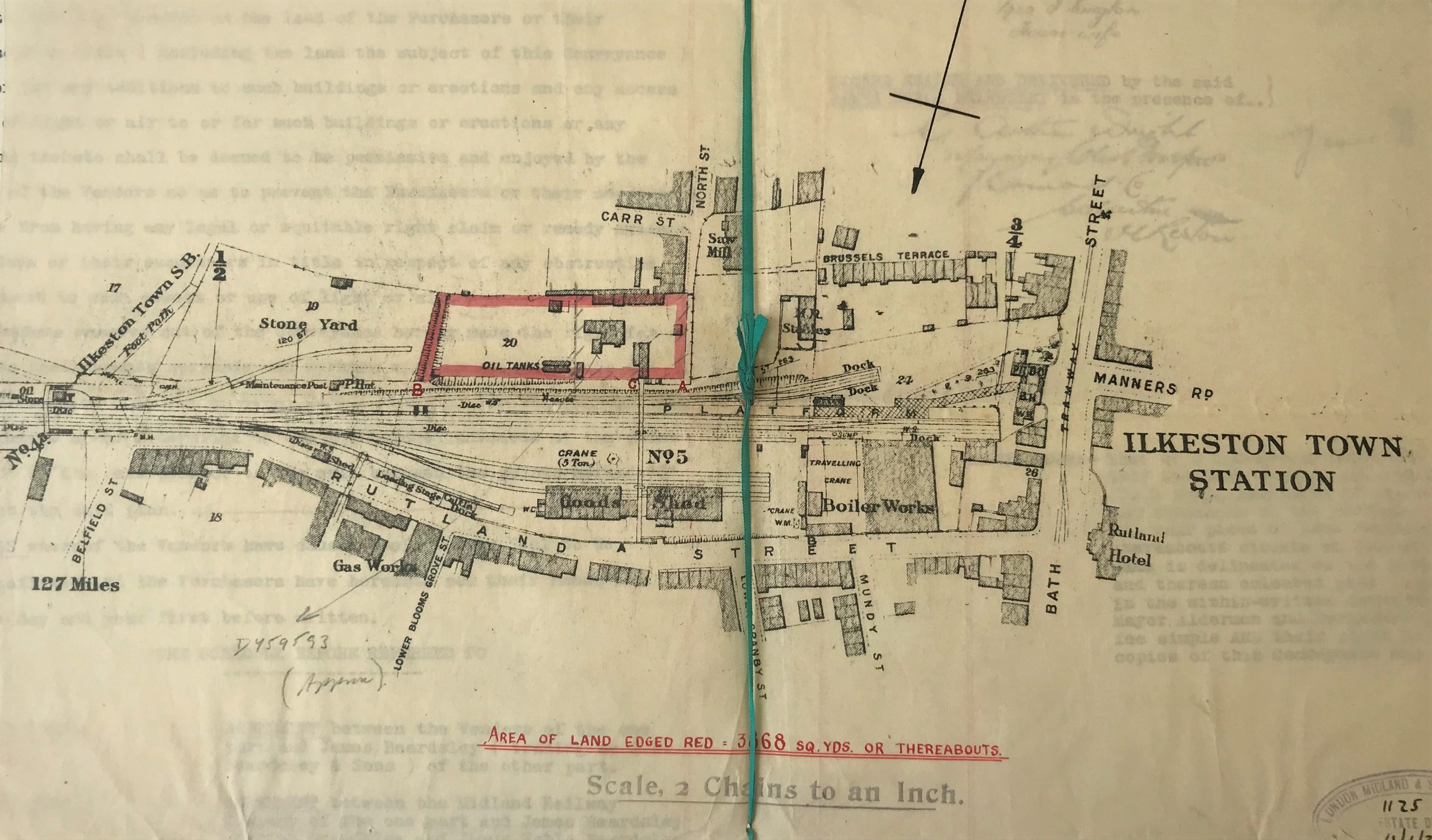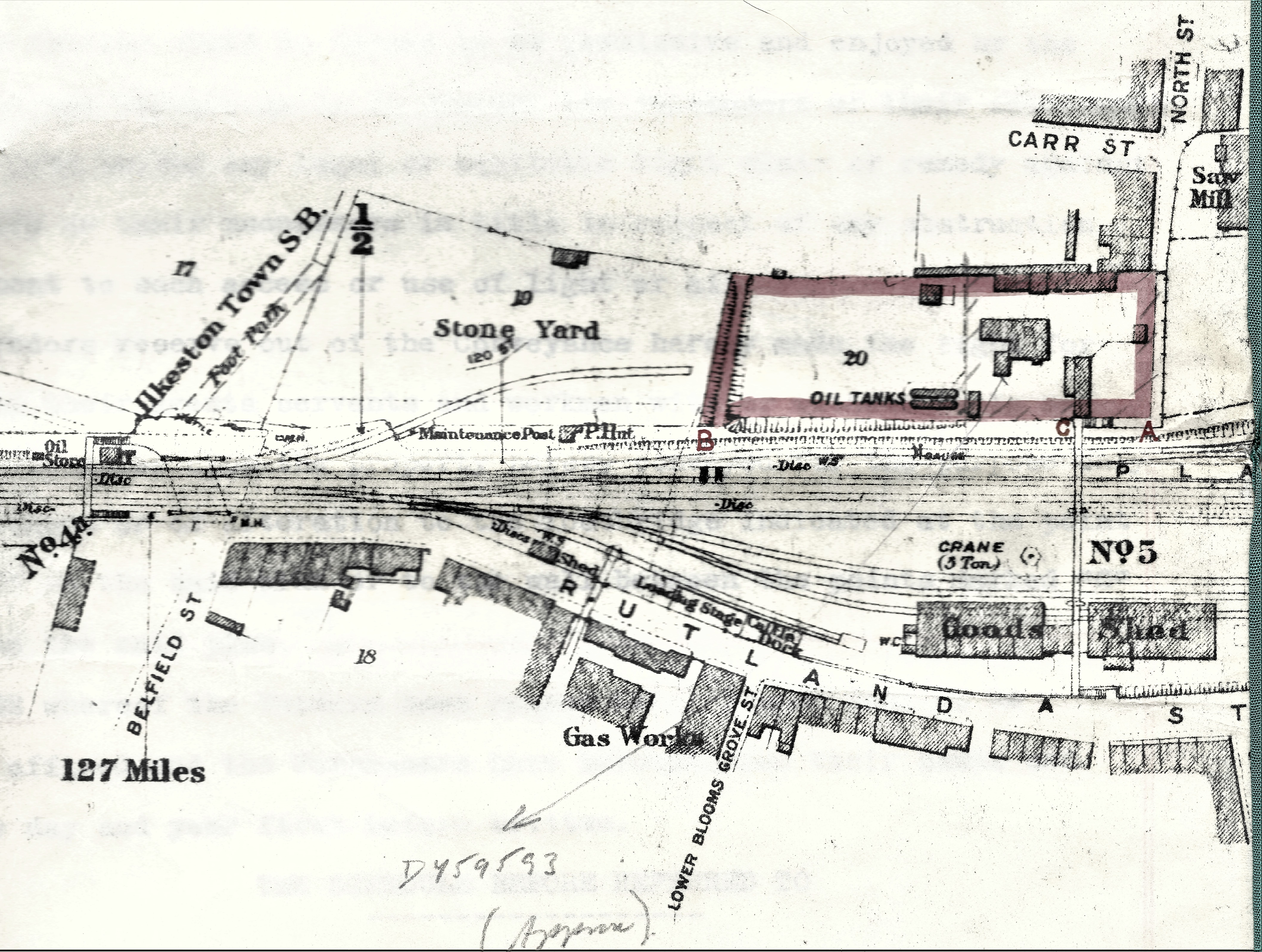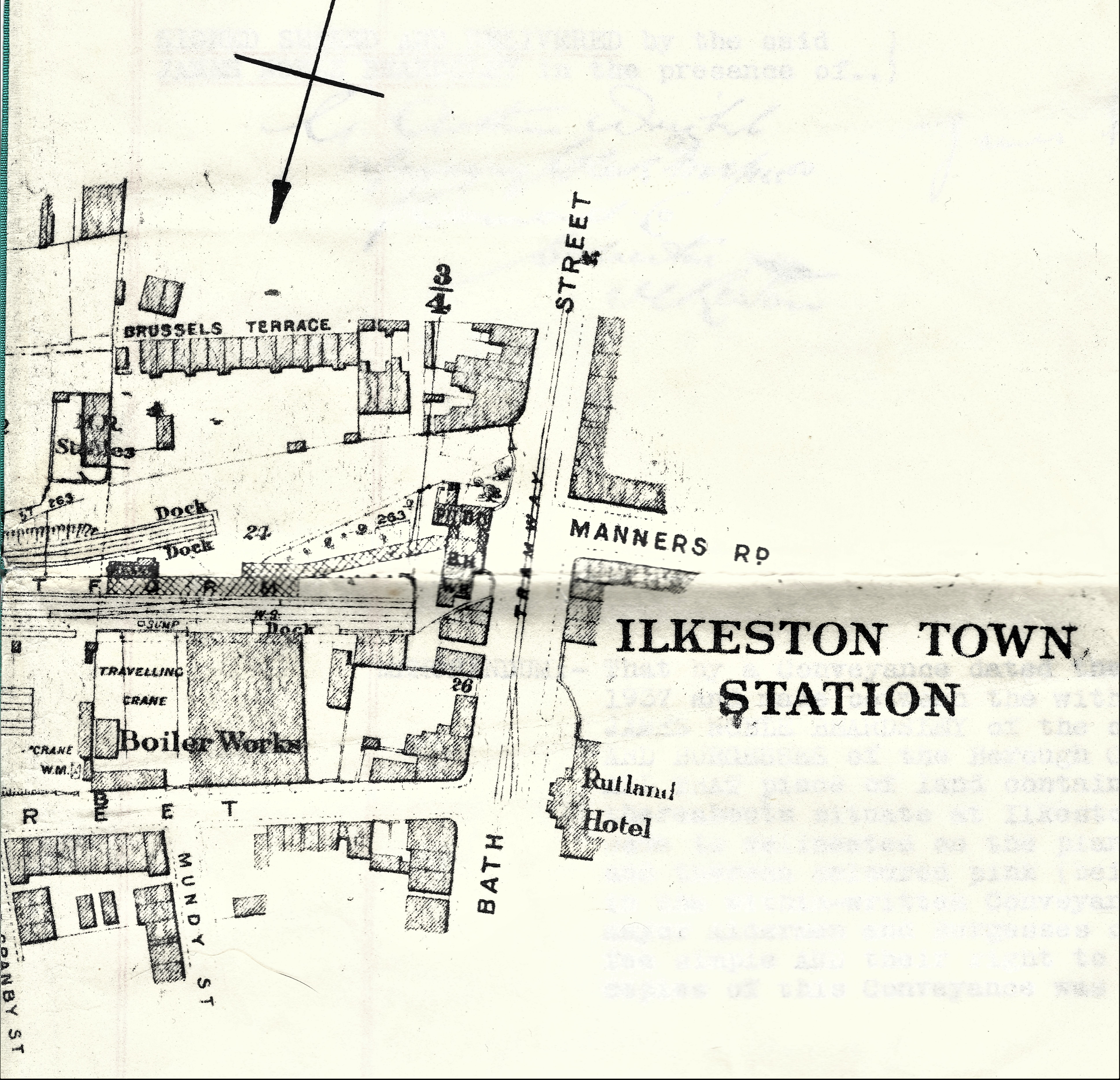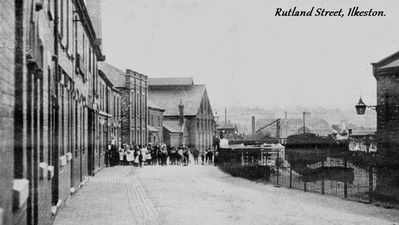The following plan is taken from a 1937 conveyance document of Ilkeston Town Station in the Jim Beardsley Collection.
And below are two larger reprints from the same plan.
The following helpful comments were offered by members of the Ilkeston and District Local History Society Facebook page. First off, David Kirk sets the scene in great and expert detail (edited) ….
And Paul Miller adds that …. SB is definitely Signal box, which stood approximately where the Island into Tesco stands. There was also a lovely Midland footbridge by it, spanning the tracks.
————————————————————————————————————————
Adding detail of a different nature ….
Ann Featherstone includes a quote from her PhD thesis : “Permission to build, in Rutland Street on “the site of the old boilerworks yard,” a “temporary wooden theatre,” constructed entirely of wood and able to accommodate 1,800 people, was granted to Henry Vincent Clarke by the Borough Council in 1893. This was greeted with characteristic enthusiasm by the local press: ‘Ilkeston is looking up. A new theatre and a new church within a week of each other is not bad business’. (Ilkeston Pioneer, 3rd November 1893). I’m attaching a picture of Rutland Street, though I’m ashamed to say I hadn’t noted the source or the date, but I thought it might be useful.
Similarly, John Beniston tells us…. My Great grandfather James Beniston had a business in Bath Street, Ilkeston, as a carriage builder mentioned in Kelly`s directory 1891, 1904, 1916, and 1922. The business was called Borough Carriage Works. A partnership was formed with Alfred Hill c1890 and sometimes referred to as Hill & Beniston. My father told me the works were probably within/near Ilkeston Town station yard on the Rutland Street side of Bath Street.
Ilkeston Library card index is…Borough of Ilkeston rate book 1914 folio 86 has this reference to the premises … Beniston James Bath Street Coach Builders Yard & Workshop est rental £19.18s. yard £4.00 workshop.
——————————————————————————————————————————————–






